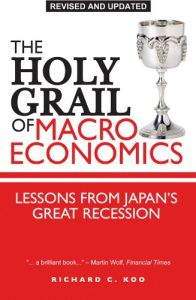Economist Richard Koo’s concept of a “balance sheet recession” could change the way economists think and governments behave. Koo describes how, in the aftermath of massive asset devaluations, private corporations turn from profit maximization to debt repayment to clean up their balance sheets. Thus demand for funds evaporates, growth slumps and traditional efforts to bolster the economy fail. With simple and graceful logic, Koo illustrates why state spending is crucial at those times. Leaders in the financial services industry and in government will particularly appreciate this groundbreaking work.
A “balance sheet recession” is the result of a plunge in asset prices that forces the corporate sector to turn from profit maximization to debt minimization.
Economists have long struggled to explain destructive economic downturns like the 1930s Great Depression, and they have disagreed as to what the proper recovery policies should be. An analysis of Japan’s Great Recession, which lasted from 1990 to 2005, offers a new dimension by which to consider effective responses that could more quickly address harmful slumps.
A new concept in understanding deep macroeconomic declines centers on balance sheet recessions. Simply put, many major economic crises derive from the bursting of some type of bubble – the eventual and unavoidable price drop in overvalued assets that can leave gaping holes in corporate balance sheets. In the wake of such an event, corporate leaders, all at the same time, change their priorities from expansion to debt reduction. Declines in investment, borrowing and spending follow; aggregate demand plunges, and recession ensues.
The...










Comment on this summary